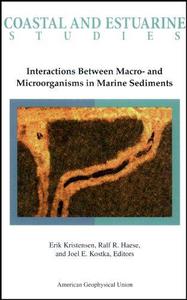

E-Books →Coral Reefs and Climate Change Science and Management
Published by: voska89 on 3-08-2022, 23:28 |  0
0

Coral Reefs and Climate Change: Science and Management By
2006 | 246 Pages | ISBN: 0875903592 | PDF | 6 MB
Published by the American Geophysical Union as part of the Coastal and Estuarine Studies Series.The effects of increased atmospheric carbon dioxide and related climate change on shallow coral reefs are gaining considerable attention for scientific and economic reasons worldwide. Although increased scientific research has improved our understanding of the response of coral reefs to climate change, we still lack key information that can help guide reef management. Research and monitoring of coral reef ecosystems over the past few decades have documented two major threats related to increasing concentrations of atmospheric CO2: (1) increased sea surface temperatures and (2) increased seawater acidity (lower pH). Higher atmospheric CO2 levels have resulted in rising sea surface temperatures and proven to be an acute threat to corals and other reef-dwelling organisms. Short periods (days) of elevated sea surface temperatures by as little as 1-2°C above the normal maximum temperature has led to more frequent and more widespread episodes of coral bleaching-the expulsion of symbiotic algae. A more chronic consequence of increasing atmospheric CO2 is the lowering of pH of surface waters, which affects the rate at which corals and other reef organisms secrete and build their calcium carbonate skeletons. Average pH of the surface ocean has already decreased by an estimated 0.1 unit since preindustrial times, and will continue to decline in concert with rising atmospheric CO2. These climate-related Stressors combined with other direct anthropogenic assaults, such as overfishing and pollution, weaken reef organisms and increase their susceptibility to disease.Content: Chapter 1 Corals and Climate Change: An Introduction (pages 1-4): John E. N. Veron and Jonathan PhinneyChapter 2 Tropical Coastal Ecosystems and Climate Change Prediction: Global and Local Risks (pages 5-32): Terry Done and Roger JonesChapter 3 Coral Reef Records of Past Climatic Change (pages 33-54): C. Mark Eakin and Andrea G. GrottoliChapter 4 The Cell Physiology of Coral Bleaching (pages 55-71): Sophie G. Dove and Ove Hoegh?GuldbergChapter 5 Coral Reefs and Changing Seawater Carbonate Chemistry (pages 73-110): Joan A. Kleypas and Chris LangdonChapter 6 Analyzing the Relationship Between Ocean Temperature Anomalies and Coral Disease Outbreaks at Broad Spatial Scales (pages 111-128): Elizabeth R. Selig, C. Drew Harvell, John F. Bruno, Bette L. Willis, Cathie A. Page, Kenneth S. Casey and Hugh SweatmanChapter 7 A Coral Population Response (CPR) Model for Thermal Stress (pages 129-144): R. van Woesik and S. KoksalChapter 8 The Hydrodynamics of a Bleaching Event: Implications for Management and Monitoring (pages 145-161): William Skirving, Mal Heron and Scott HeronChapter 9 Identifying Coral Bleaching Remotely Via Coral Reef Watch - Improved Integration and Implications for Changing Climate (pages 163-180): A. E. Strong, F. Arzayus, W. Skirving and S. F. HeronChapter 10 Management Response to a Bleaching Event (pages 181-206): David Obura, Billy Causey and Julie ChurchChapter 11 Marine Protected Area Planning in a Changing Climate (pages 207-221): Rodney V. Salm, Terry Done and Elizabeth McLeodChapter 12 Adapting Coral Reef Management in the Face of Climate Change (pages 223-241): Paul Marshall and Heidi Schuttenberg
Buy Premium From My Links To Get Resumable Support,Max Speed & Support Me
Download From UploadCloud
https://www.uploadcloud.pro/wl1h3isji4vt/6e78o.C.R.a.C.C.S.a.M.rar.html
Download From NovaFile
https://nfile.cc/bjVRn9Zj/6e78o.C.R.a.C.C.S.a.M.rar

https://rapidgator.net/file/9e04ade39b49bf5aa360dea88b04abe0/6e78o.C.R.a.C.C.S.a.M.rar.html

https://nitroflare.com/view/FB6AE1ADB0CF787/6e78o.C.R.a.C.C.S.a.M.rar

https://uploadgig.com/file/download/936C163dfdF99f78/6e78o.C.R.a.C.C.S.a.M.rar
https://www.uploadcloud.pro/wl1h3isji4vt/6e78o.C.R.a.C.C.S.a.M.rar.html
Download From NovaFile
https://nfile.cc/bjVRn9Zj/6e78o.C.R.a.C.C.S.a.M.rar

https://rapidgator.net/file/9e04ade39b49bf5aa360dea88b04abe0/6e78o.C.R.a.C.C.S.a.M.rar.html

https://nitroflare.com/view/FB6AE1ADB0CF787/6e78o.C.R.a.C.C.S.a.M.rar

https://uploadgig.com/file/download/936C163dfdF99f78/6e78o.C.R.a.C.C.S.a.M.rar
Links are Interchangeable - No Password - Single Extraction
Related News
-
{related-news}

